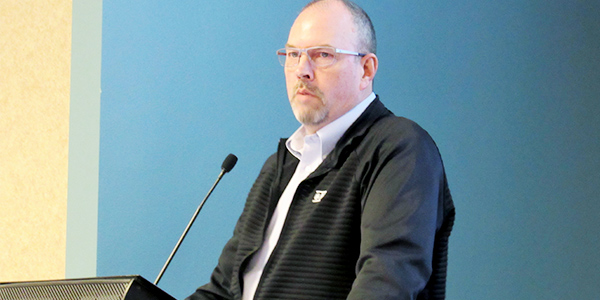MISO Readying Intensive Transmission Planning.)
“First and foremost, I would call this a transmission planning study. … What we’re looking for are transmission needs to facilitate the efficient use of new resources,” Senior Manager of System Planning Coordination Jarred Miland told stakeholders during a Planning Advisory Committee meeting Wednesday.
Miland said MISO faces “significant grid and stability issues” if it doesn’t seek out transmission investments. With more inverter-based generation, the grid operator expects more erratic dispatch patterns and regional energy transfers to increase and become less predictable.
He said MISO will investigate long-term project contenders’ reliability, economic and resource adequacy benefits across multiple annual cycles of its Transmission Expansion Plan (MTEP).
“We’re looking at everything holistically,” Miland said.
Staff intends to present “robust business cases” for every project it advances for approval, Miland said. He added that previous findings under MISO’s Resource Availability and Need initiative, ongoing Renewable Integration Impact Assessments and new planning futures will feed into the long-range study.
Some stakeholders said transmission buildouts under a long-range plan would allow renewable generation to connect at lower costs. They asked if MISO was courting a chicken-or-egg scenario where transmission projects encourage renewable generation investment over other generation types.
“I think transmission is agnostic. We are looking at what the world is telling us. Look at the generation interconnection queue [and] state targets,” Miland said. “The grid is not evolving 30 years from now. It’s evolving now.”
Some stakeholders argued that MISO needs to draft Tariff language or business practices that lay out a long-range transmission study process.
“I don’t know if I see the need to put this in our Tariff. It’s our charge to do transmission planning,” Miland said.
Mississippi Public Service Commission counsel David Carr disagreed, saying that MISO has established manuals on subregional planning and generator interconnection studies.
Miland pointed out that the RTO’s market-congestion planning studies aren’t laid out in the Tariff or business practice manuals. But he added that MISO could consider some revisions.
“MISO has full authority to do planning, and we need them to do planning for the grid of the future,” the Sustainable FERC Project’s Lauren Azar said.
“FERC expects MISO and other RTOs to do this kind of planning,” agreed Clean Grid Alliance’s Natalie McIntire.
“It takes 10 years to build a transmission project, so we don’t want to be looking five years out … and then miss the boat,” Miland said. “If we are nearsighted, and we keep looking five years out, we have the potential to wind up with a system that’s not as efficient as it could be.”
Stakeholders also pressed staff on the projects’ names. Projects in the grid operator’s last long-term planning package in 2011 were called Multi-Value Projects.
Miland said the projects’ cost allocation could lend them their names. “That cost-allocation effort may very well produce a new category.”
The first MTEP 21 long-range projects are possible at the end of next year. “If that happens, we may very well be looking at our existing Tariff for cost allocation,” Miland said. “Cost allocation takes a significant amount of time to develop and get FERC approval.”
Miland said he expects the first cost allocation discussions with stakeholders to begin by the end of this year.
While the long-term plan’s goal is to move away from “just-in-time projects,” Miland said, any projects uncovered during the course of MTEP 21 would probably only focus on 10 to 20 years into the future. Longer-term projects would most likely arrive in later MTEPs under a different cost allocation, he said.
“This long-range transmission plan is a big apple. We can’t bite it all at once,” Miland said.
MISO will initially focus its efforts geographically, Miland said, paying special attention first to needs in its West and Central regions and the Midwest-to-South interface.
McIntire asked that the first project approvals lay out a “cost-effective foundation” for other long-term project approvals to build on.
“We’re on the same wavelength,” Miland said.





